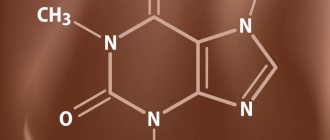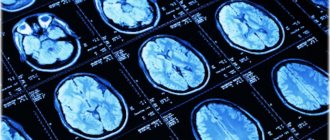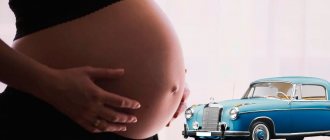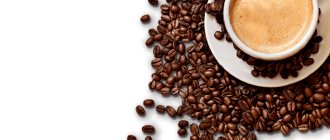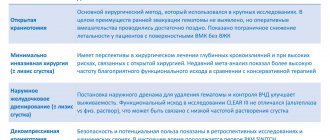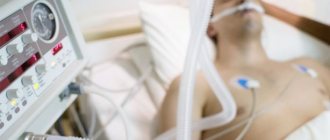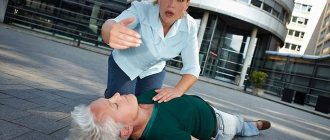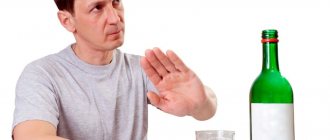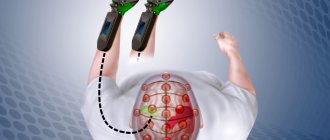Ischemic stroke is one of the most pressing medical and social problems. Both in the acute period of stroke and after it, patients have swallowing disorders, which requires a special diet. At the Yusupov Hospital, doctors provide treatment and rehabilitation for patients with ischemic stroke. A personal nutritionist will select meals to provide the body with the necessary nutrients.
Causes of changes in metabolism during ischemic stroke
In patients with ischemic stroke, the digestive, respiratory, cardiovascular and urinary systems are most quickly involved in the pathological process, and multiple organ failure develops. During a stroke, the central regulatory organ suffers, which leads to a breakdown of central neurogenic control over the processes occurring in the internal organs.
Metabolic changes during stroke occur both as a result of powerful sympathetic stimulation of hormone release (glucagon, catecholamines, corticosteroids) and under the influence of local mediators. As a result of this reaction, the metabolism changes so that the body can absorb nutrients in the face of severe illness. This allows the mobilization of energy and substrates to support inflammatory and immune responses, as well as tissue regeneration. With ischemic stroke, protein deficiency develops, which ultimately leads to disruption of cell function and structure, as well as organ function.
In conditions of increased metabolism, an important role in the complex intensive care of ischemic stroke belongs to ensuring adequate nutrition using a number of methods other than regular food intake. A significant proportion of patients with ischemic cerebral stroke are unable to eat on their own, which is associated with a decreased level of consciousness or impaired swallowing function. Often the only possible way to deliver nutrients to these patients is artificial nutrition.
Principles for choosing drinking products
When choosing drinks, the patient is guided by their composition and effect on the nervous system and digestion.
Drinking products must replenish the lack of fluid that occurs due to the inflammatory process and meet the following requirements:
- The ingredients do not contain irritating components (ginger, bergamot, kombucha) or substances that affect the nervous system (caffeine, alcohol);
- Concentrated drinks are diluted with water;
- Ready-made foods containing dyes, gases and preservatives from the diet
- The optimal liquid temperature is 35-45 degrees;
- In the early rehabilitation period, drinks that cause thirst (with a sweet taste) or have a diuretic effect (fruit drinks, decoctions) are not consumed.
The optimal diet (treatment table No. 12) for stroke patients was developed by Russian doctor Manuil Isaakovich Pevzner. The table is designed to restore the functions of the nervous system and is characterized by a reduction in the amount of salt, carbohydrates and extractives, and an increase in phosphorus-containing products (liver, beans, milk) in the diet.
Artificial nutrition for ischemic stroke
Artificial nutrition is carried out enterally (while maintaining, to one degree or another, the movement of nutrients through the gastrointestinal tract) and parenterally.
The main elements of parenteral nutrition are water, sources of nitrogen and energy. As sources of nitrogen, specialists at the Yusupov Hospital use synthetic amino acid mixtures containing adequate and balanced amounts of nonessential and essential amino acids. Of the synthetic amino acid mixtures, the following drugs are most often used:
- azonutril;
- aminosteryl;
- Vamin;
- polyamine;
- Freamin.
The solutions ensure the synthesis of proteins from the administered amino acids, have a pronounced positive effect on protein metabolism, lead to a positive nitrogen balance and stabilization of the patient’s body weight. Amino acid mixtures remove toxins from the body by reducing the concentration of ammonia, which binds to the formation of non-toxic breakdown products.
Doctors at the Yusupov Hospital provide the amount of energy needed by patients with ischemic stroke through carbohydrates or a combination of fat emulsions and monosaccharide solutions (lipofundin, intralipid). For enteral nutrition of patients with ischemic stroke at the Yusupov Hospital, polymer or elemental mixtures are used. Polymer mixtures contain fats, proteins and carbohydrates in proportions typical of a normal human diet. They consist of the following ingredients:
- whole protein isolates (milk, soy, meat, eggs);
- partially hydrolyzed starch;
- triglycerides;
- the necessary set of vitamins, micro- and macroelements.
Before absorption, these mixtures undergo enzymatic treatment in the intestines. Elemental mixtures contain:
- amino acids or short peptides;
- dextrose and oligosaccharides;
- essential fatty acids and medium chain triglycerides.
They are administered to patients if it is impossible to use polymer mixtures due to a pronounced decrease in the absorption and digestive functions of the intestine. The Yusupov Hospital also widely uses specific biologically significant elements that purposefully correct metabolic disorders such as:
- glutamine;
- branched amino acids;
- arginine;
- taurine;
- nucleic acids;
- microelements;
- antioxidants;
- vitamins.
In severe ischemic stroke, the inclusion of antioxidants in the enteral nutrition regimen provides better control over the increase in metabolism and reduces the time required for compensation of internal toxicosis. Doctors at the Yusupov Hospital for stroke prefer early enteral nutrition as it is more physiological and easier to administer. Early enteral nutrition can solve the problem of “empty intestines.”
The movement of food through the gastrointestinal tract maintains the normal state and composition of the intestinal microflora. By prescribing artificial enteral nutrition to a patient with an ischemic stroke who is unable to feed on his own, doctors at the Yusupov Hospital prevent the occurrence of septic complications associated with the penetration of microorganisms from the intestines into the blood.
Basic principles of nutrition
Nutrition after a stroke is based on a lifelong restriction on the intake of foods that can provoke a new attack.
Since relapse of ischemia is caused by primary diseases leading to vascular damage (hypertension, diabetes mellitus, atherosclerosis), dietary nutrition should contribute to the full compensation of these diseases.
Principles of therapeutic nutrition:
- High calorie content (2400-2650 kcal per day);
- Reducing salt consumption to 3 g per day (no need to salt food at all);
- The diet includes 5 meals, the dry portion of each serving does not exceed 150-200 g;
- Products must not interact with medications;
- Saturated and transgenic fats (fried and confectionery products, fatty red meats, margarine), foods with extractive and irritating effects (vinegar, mustard, pepper, ginger, caffeine) are removed from the diet;
- Increasing phosphorus intake (dairy cuisine);
- Recommended cooking methods are steaming, blanching and baking (especially meat, cabbage, apples);
- Drink water only when required;
- Approximate daily ratio of nutrients: proteins – 20%, fats – 10%, carbohydrates – 70%.
IMPORTANT! Patients with concomitant diabetes mellitus should use insulin after each meal and liquid in a clear dependence on the number of bread units (XU).
Tea
Some types of tea can be consumed after a stroke.
There are several types of tea: fermented (black, white, yellow), non-fermented (green), herbal, medicinal (pharmacy preparations).
Prohibited: strong tea of any kind, medicinal teas without consulting a doctor, herbal tonic teas (with the addition of cinnamon, ginger). This is due not only to their ability to cause cerebral vasospasm, but also to possible interactions with medications.
Recommended teas after a stroke are weak herbal teas (chamomile, amaranth, mint, rosehip), hibiscus and green. Tea should be consumed separately from other foods.
Tea with mint
Mint is one of the foods approved for consumption after a stroke. The active substances contained in the plant have the ability to relax the muscle layer of blood vessels, thereby improving cerebral circulation.
The daily dose for patients is no more than 5 g of dried and no more than 3 g of fresh mint in tea or other products. Among all types of mint, preference should be given to field, cat and lemon varieties.
Milk
Milk can be consumed after discharge from the hospital. You should not drink milk in a hospital - in bedridden patients the product often causes dyspepsia. In later periods, milk consumption is not limited - it contains a lot of phosphorus, which is an active participant in nervous reactions, as well as protein.
Among all types of milk, you should prefer cow and goat, buffalo, mare, as well as vegetarian (rice, oat and, especially, nut). Powdered milk containing up to 30% fat should not be consumed.
Goat milk
Goat's milk is the most preferred type of milk for a stroke patient for several reasons:
- The product does not contain casein (rarely causes allergies);
- The fat molecules of goat's milk are smaller than those of cow's milk (rapid digestibility with no effect on cholesterol levels);
- With the same calorie content as cow's milk, goat's milk contains more proteins (globulins and albumins), which mobilize immune responses. For this reason, goat milk is especially recommended for weakened patients.
What alcohol can be beneficial?
During the average period of rehabilitation (1-2 years), the use of all types of alcohol should be completely abandoned. Subsequently, a separate group of patients (with atherosclerosis) can use some types of wines in limited quantities (50 g per day for men, 30 g for women).
General requirements for wines for stroke survivors:
- Alcohol content - no more than 10%;
- Sugar content - no more than 1% (dry wines);
- Type – white or red;
- Natural origin and aging for no more than 2-3 years.
Often patients seek to replace wine with wine products. Such substitutes consist of alcohol, sugar and artificial fruit concentrates, and therefore should be completely excluded from the diet.
Conclusion
A healthy diet is the key to preventing a new stroke and transient ischemic attacks. People who have suffered cerebral ischemia should adhere to proper nutrition, regardless of what concomitant diseases they suffer from.
To ensure that meals contribute to rapid rehabilitation, patients are recommended to take part in “Stroke Schools”, in which neurologists and nutritionists help patients choose an individual diet. Regardless of the taste preferences and needs of the body, the safest drink after a stroke is distilled water.
Useful video on the topic:
Let's listen to the body
What needs to be done in order to avoid or timely diagnose such serious arterial damage? Firstly, if you have symptoms such as decreased memory, vision, tinnitus, headaches, dizziness, episodes of loss of consciousness - you need to see a doctor and do a special study - duplex scanning of the carotid arteries (arteries responsible for supplying blood to the head). If you have high cholesterol levels in your blood, have angina pectoris, and your legs hurt when walking, you need to do a duplex scan of the carotid arteries. If you have no complaints, but you are over 50 years old and have elevated cholesterol levels, you need a duplex scan of the carotid arteries.
Juices
A feature of juices is their high content of simple carbohydrates (fructose, glucose, sucrose).
If your stroke is accompanied by diabetes, drinking juices makes it much more difficult to control your sugar levels. In addition, sugar causes blood thickening in all patients, so juices should be consumed after dilution (1 part juice to 3 parts water).
Freshly squeezed juices increase gas formation and urination, which causes many additional complaints in bedridden patients, so they can be replaced with compotes and decoctions. Ready-made products from stores, as well as tomato juice, which contains a lot of salt, should not be consumed.
IMPORTANT! Most patients after a stroke are forced to use glucocorticosteroids for one reason or another. These drugs in 100% of cases help to increase blood sugar levels, so during the period of using hormones, juices are completely excluded from the diet.
Coffee
Coffee made from coffee beans is a prohibited drink for people who have had a stroke. This ban especially applies to older people.
This is due to the high content of caffeine in the beans, which has a pronounced effect on the cerebral arteries: in the first minutes after consumption, the vessels expand sharply (the phase of general increase in tone), and then just as suddenly narrow (the phase of decrease in tone), which will not only cause lethargy in the patient , but will also increase the risk of a new attack.
REFERENCE. Coffee beans are not the only type of coffee. Varieties of the drink made from chicory, acorns, beets, barley, dandelion, sweet potato, pear seeds, hawthorn, dogwood, sunflower seeds and rye are safe for patients at any stage of rehabilitation.
Kvass
Only certain types of kvass can be consumed after a stroke. Classic bread kvass does not affect blood circulation and the condition of blood vessels, but it can cause intestinal colic and bloating due to fermentation processes, and also has a diuretic effect, so it should not be consumed in the first year after an attack. Types of kvass allowed for early consumption: milk, berry, fruit, beet, honey (in the absence of diabetes).
REFERENCE. If a patient has an addiction to classic kvass (malt, bread, crackers), during the rehabilitation period it can be replaced with a similar-tasting but completely safe product - oatmeal jelly.
Alcohol
Drinking alcohol after a stroke is prohibited. Its effect on the body depends entirely on the dose. In small doses, ethyl alcohol helps dissolve atherosclerotic plaques. In large doses, drinking alcohol causes:
- Increased blood pressure;
- Vasospasm;
- Increased sweating with subsequent centralization of blood circulation;
- Stimulation of the respiratory center;
- Multiple brain manifestations (impaired memory, speech, breathing).
This negative effect is even more pronounced in patients who have persistent residual effects after a stroke.
REFERENCE. “Alcohol” and “ethyl alcohol” are synonymous concepts. At the same time, the consumption of alcohol substitutes (alcohols with other names) is strictly prohibited, including homemade alcoholic beverages.
What not to eat after a mini-stroke
From the diet of patients after a microstroke, it is necessary to completely exclude any pastries, bread, cakes, buns, margarine, sweet and butter. The menu should not contain dishes made from fatty meats and fish, smoked meats and pickles. After an acute cerebrovascular accident, fried foods, pork, and lamb are contraindicated for patients.
Neurologists at the Yusupov Hospital recommend that patients after a mini-stroke give up alcohol in any form. The only exception that can be made is for natural red wine. It is necessary to clarify with your attending physician how much of this drink can be consumed.
The cooks at the Yusupov Hospital prepare dishes using gentle technologies: stewed, steamed, in the oven. During cooking, do not add any oils or salt, and remove the layer of fat that forms on the surface of the food. They use many recipes to diversify the menu and make the dishes tasty and healthy.
